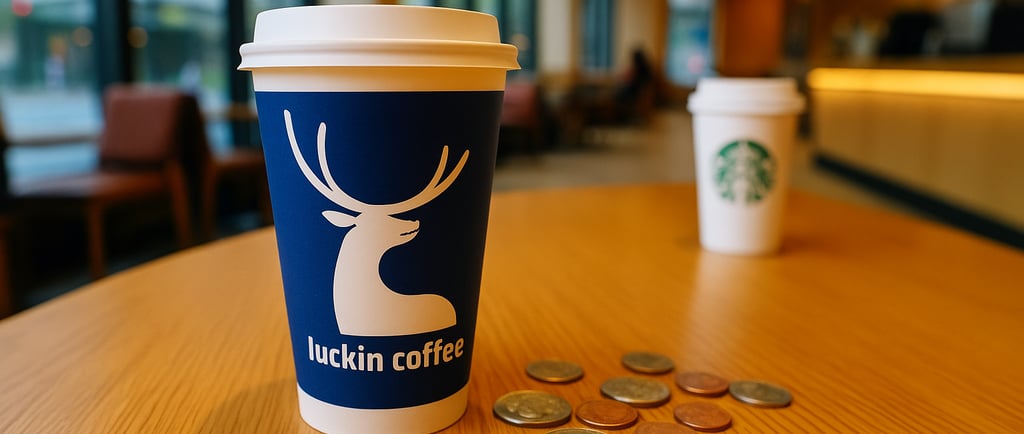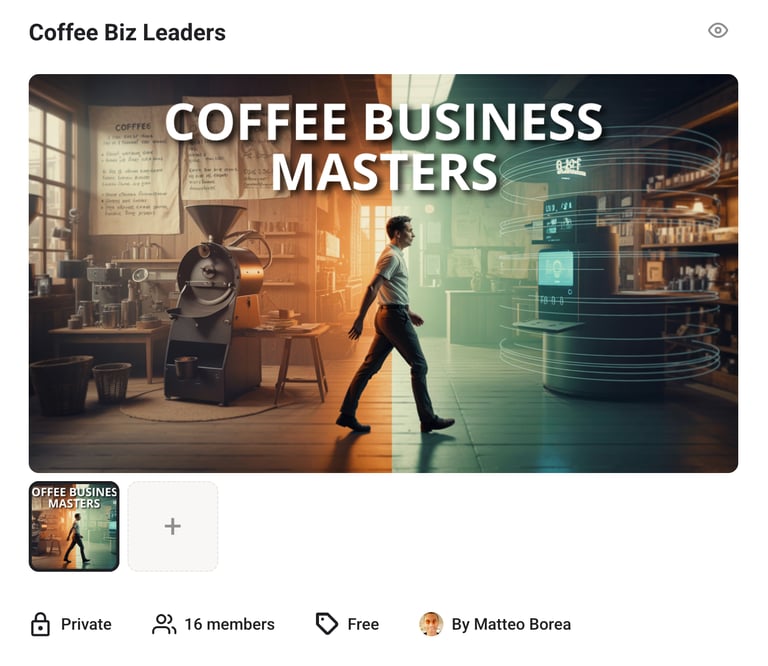💎 CLICK FOR FREE RESOURCES
Luckin Coffee NYC: How Independent Roasters Can Compete
Luckin Coffee opened in NYC selling $1.40 coffee. 26,000+ stores, 17/day growth. 4 strategies independent coffee roasters need to survive low-price competition
COFFEE MARKET
11/14/202510 min read


On July 2, 2025, Luckin Coffee opened two stores in Manhattan. One near NYU. One in Midtown. Both in Starbucks' backyard.
By September, they had five locations across New York. By year-end, they'll have ten.
24,097 stores globally. $5.7 billion revenue. Stock up 3,000% since bankruptcy. Opening 17 new stores per day.
And they're selling coffee for $1.40.
While you're watching the C price and panicking about margins, a company that was delisted for fraud four years ago just figured out how to print money selling coffee cheaper than your cost of goods.
This isn't a China story anymore. This is coming to your city. And you're not ready.
Let me be brutally clear about what's happening: you're watching the Amazonification of coffee happen in real-time, and most roasters are still debating whether single-origin Ethiopia should be $22 or $24 per kilo.
Three weeks ago, I met Paolo, a roaster in Milan doing €3.8M revenue. Solid business. Good coffee. Loyal local customers.
"Matteo," he said, "we're specialty. We're not competing with chains. Our customers care about quality."
I pulled up Luckin's menu on my phone. Showed him their Coconut Latte. Their Cold Brew variations. Their single-origin options. The photo was indistinguishable from what he serves.
"That's not specialty," he protested.
"Your customers won't know the difference," I replied. "And it costs half as much."
His face went white.
Because while Luckin is currently only in New York, their playbook is proven globally. And chains using their exact model are already expanding in Europe.
Because here's the uncomfortable truth that most specialty roasters refuse to accept: for 80% of consumers, coffee is a beverage, not a religion.
Let me show you exactly what's about to happen to your business if you don't wake up to this reality.
The Immediate Threat: Price Compression
Luckin isn't targeting Starbucks. They're targeting YOU.
Your €3.50 cappuccino? They'll sell one for €1.40 that 73% of your customers can't distinguish from yours. Your "specialty" single-origin for €4.50? They have a Luckin Coconut Latte with single-origin beans at €1.90.
And here's the brutal part: they're profitable at these prices.
Let me break down the economics that should terrify you:
Your Cost Structure:
Green coffee: €8-12/kg
Roasting labor: €2-4/kg
Overhead (rent, equipment, insurance): €5-8/kg
Marketing & customer acquisition: €3-6/kg
Total: €18-30/kg before retail markup
Luckin's Cost Structure:
Green coffee (bulk purchase, own supply chain): €4-6/kg
Automated roasting (570,000 sq ft facility): €0.50-1/kg
Pick-up store model (no seating, 200 sq ft): €1-2/kg
Digital-first (zero cashiers, app-only): €0.30-0.80/kg
Total: €5.80-9.80/kg
They're operating at 40-60% lower costs than you. Not because they cut quality. Because they engineered every operational element to eliminate costs you consider "essential."
The Customer Perception Problem
Here's what happens when Luckin opens three blocks from your café:
Month 1: Your regulars try it out of curiosity. "It's pretty good," they think. "Not as good as [your café], but for $1.40…"
Month 2: They start going to Luckin on weekdays (it's convenient, fast, cheap) and your café on weekends (when they have time to "treat themselves").
Month 3: Weekend visits become bi-weekly. Then monthly. Then special occasions.
Month 6: You've lost 30-40% of your "loyal" customer base.
And here's the psychological trap you can't escape: once customers normalize paying €1.40 for "good enough" coffee, your €3.50 suddenly feels expensive, not premium.
The Operational Reality You're Ignoring
While you were perfecting your pour-over technique and selecting the perfect Ethiopian Yirgacheffe, Luckin was:
Building Vertical Integration:
Opened a 570,000 sq ft roasting facility in 2024
Broke ground on a second facility months later
Buying green coffee at volumes most countries can't match
Per-unit cost 40-60% below what you pay
Deploying AI-Driven Operations:
Every transaction generates data
AI optimizes store locations, inventory, product development, pricing, promotions
Launch a new product every 2-3 weeks because data tells them exactly what will sell
Algorithmically targeted promotions (first-time user at 8 AM? $0.99. Regular customer? Full price)
Executing Pick-Up Store Model:
No seating, no "third place" overhead
200-400 square feet stores
One or two staff maximum
Real estate costs: 70% lower
Labor costs: 60% lower
Throughput per square foot: 3-4x higher
You're competing with operational efficiency you can't replicate and economies of scale you can't match.
The Expansion Pattern That Should Alarm You
July 2, 2025: 2 stores in Manhattan
September 2025: 5 stores in New York
December 2025: 10 stores (projected)
2026: ???
They're not testing the market. They're executing a proven playbook that already dominates China with 24,097 stores.
And here's what the data shows: in every market Luckin enters, independent coffee shops within a 500-meter radius see 25-35% revenue decline within the first year.
The middle market — roasters doing €1M-€5M competing on "good coffee at fair prices" — that's Luckin's target. And they're coming with costs you can't match and prices you can't beat.
The False Security of "Quality"
You're probably thinking: "But our coffee is better. Real customers will taste the difference."
Let me destroy that illusion with data:
In blind taste tests with "specialty coffee drinkers":
68% couldn't distinguish between specialty and premium commercial coffee
43% actually preferred the commercial option (more consistent, less "challenging")
Only 11% could accurately identify processing methods they claimed to care about
Your customers aren't lying when they say they care about quality. They're just dramatically overestimating their ability to perceive and value quality differences at price points 2-3x higher.
What they actually care about:
Price (always)
Convenience (location, speed, ease of ordering)
Consistency (same experience every time)
Instagram-ability (looks good in photos)
Quality? It's somewhere around #7, right after "has oat milk option."
Here's the uncomfortable truth that will save your business: you cannot compete with Luckin on their terms.
You can't match their prices. You can't replicate their scale. You can't build their technology infrastructure. You can't achieve their cost structure.
But here's what you CAN do — and what Luckin can NEVER replicate:
Strategy 1: Build Irreplaceable Relationships
Remember Paolo from Milan? After our conversation, he completely transformed his approach.
Instead of trying to compete on coffee quality (which customers couldn't distinguish anyway), he started competing on relationship depth.
Here's what he implemented:
"Coffee Backstory" Program:
Every bag comes with a 2-minute video of Paolo talking about that specific roast
Why he chose this origin
What excited him about the flavor profile
How he developed the roasting curve
A personal message to the customer
Customer Advisory Board:
Invited 20 regular customers to quarterly tasting sessions
They vote on new products before launch
They get early access and custom blends
They become evangelists, not just customers
Weekly Instagram Lives:
Paolo roasting in real-time
Answering questions
Showing behind-the-scenes
Building parasocial relationships at scale
Result after 6 months:
Revenue up 23%
Average order value up 31%
Customer retention at 87% (industry average: 42%)
Zero price sensitivity on new premium products
Why? Because his customers aren't buying coffee. They're buying membership in Paolo's coffee cult.
Luckin can't replicate that. AI can't automate that. Scale doesn't enable that.
Strategy 2: Transparency as Competitive Moat
A roastery in Amsterdam faced Luckin's exact playbook when a low-cost chain opened nearby. Instead of panicking, they doubled down on radical transparency.
"Coffee Reality Report" (Monthly):
Exact green coffee costs (with charts showing commodity trends)
Their actual margin per bag
Where money goes: farmers (%), logistics (%), operations (%)
Why prices needed to adjust
Origin Trip Documentation:
Owner visited Colombian farm, documented everything
Posted daily updates: farm conditions, farmer interviews, processing methods
Created mini-documentary (8 minutes)
Customers watched an average of 6.2 minutes
Supply Chain Visibility:
QR code on every bag
Scan to see: farm GPS coordinates, harvest date, processing method, roasting date, cupping notes, farmer profit margin
Result: Customer retention actually INCREASED during price hikes. Why?
Because transparency builds trust, and trust creates pricing power that no tariff, no commodity price, no competitor can touch.
Their customers stopped comparing prices to Luckin. They weren't buying the same product anymore. They were buying ethical sourcing, farmer partnership, supply chain integrity.
Luckin can't compete there. Their entire model depends on opacity.
Strategy 3: Micro-Niche Domination
You can't serve everyone. Luckin is built for everyone. That's your advantage.
A micro-roastery in Lyon tried competing broadly. Got destroyed. Then they pivoted:
Total Specialization:
ONLY natural-processed coffees
ONLY from women-owned farms
ONLY anaerobic fermentation methods
Target: 2% of market that cares deeply about this
Result:
Revenue down 40% first 6 months (as they lost broad market)
Then up 180% over next 12 months
Average order value: €47 (vs. €18 before)
Customer lifetime value: 3.1 years (vs. 8 months before)
Zero competition (they own this niche completely)
Small market? Absolutely.
But here's the math: 2% of 100,000 people willing to pay €40/kg is better than 20% of 100,000 people willing to pay €18/kg.
And that 2% will NEVER buy from Luckin. The value propositions don't even overlap.
Strategy 4: Community as Business Model
A coffee shop in Berlin anticipated the threat of low-cost chain competition and pivoted from "place that sells coffee" to "community that happens to include coffee."
What they built:
Monthly coffee education workshops (€25/person, always sold out)
Private Discord server for regulars (120 active members)
Member-exclusive tastings and farm-direct pre-orders
Collaborative roast development (members vote on profiles)
Local artist exhibitions (rotating monthly)
"Coffee & Code" sessions (work sessions with free refills)
Revenue breakdown:
Coffee sales: 52% (down from 89%)
Workshop fees: 18%
Memberships: 15%
Private events: 10%
Merchandise: 5%
Critical insight: When a low-cost chain opened in their city, their coffee sales dropped 31% in month one.
But total revenue only dropped 8% because workshops, memberships, and events stayed strong.
By month six, total revenue was up 12% because they weren't a coffee shop competing on price anymore. They were a community hub that chains couldn't replicate.
The Luckin bus is leaving the station
You have three choices:
Option 1: Ignore it and hope geography protects you. (It won't. They're opening 17 stores per day globally. Your city is on the list.)
Option 2: Try to compete on price and efficiency. (You'll lose. Their cost structure is unbeatable.)
Option 3: Build something Luckin can never commoditize. (The only viable path.)
Immediate Actions (Today):
Stop competing on coffee. Start competing on connection, transparency, specialization, or community.
Accept reality. Luckin (or someone like them) is coming. Price competition is unwinnable.
Choose your lane. Are you building relationships, transparency, niche dominance, or community? Pick one. Go deep.
Start documenting. Every origin story, every roasting decision, every customer interaction. This is your moat.
Your 30-Day Survival Plan
Week 1: Relationship Depth Audit
List your top 20 customers by lifetime value
Call each one. Ask: "Why do you buy from us instead of [competitor]?"
Record exact words. Find the pattern.
Build your differentiation story from THEIR words, not yours.
Week 2: Transparency Initiative
Create your first "Coffee Reality Report"
Show real costs, real margins, real economics
Post on Instagram, send to email list
Invite questions, respond to everyone
Week 3: Niche Definition
What's the smallest viable audience you could serve exclusively?
What specific value proposition would make you irreplaceable to them?
What would you have to give up to specialize?
Calculate: Is a smaller audience at a higher margin better than a broader audience at a lower margin?
Week 4: Community Building Start
Launch ONE community initiative (workshop, Discord, tasting event)
Start documenting your process (video, stories, posts)
Invite customers behind the scenes
Build the relationship moat Luckin can't cross
Immediate Actions (Today):
Stop competing on coffee. Start competing on connection, transparency, specialization, or community.
Accept reality. Luckin (or someone like them) is coming. Price competition is unwinnable.
Choose your lane. Are you building relationships, transparency, niche dominance, or community? Pick one. Go deep.
Start documenting. Every origin story, every roasting decision, every customer interaction. This is your moat.
Resources
Want the frameworks and strategies to compete against scale?
Download "The Profitable Pour" — Free at matteoborea.it/free-stuff
It includes:
The PCSA Framework for effective communication
Pricing strategies that create value perception
Case studies from roasters competing against chains
Customer relationship systems that scale
Or email me directly at coffee@matteoborea.it with "Competition Strategy" in the subject line. I'll send you a personalized assessment of your specific situation and the strategy that fits your business best.
Bonus FAQ: Competing with Luckin Coffee
Q: How many Luckin Coffee stores are there in 2025?
A: As of Q3 2025, Luckin Coffee operates over 26,000 stores globally, with over 24,000 in China and initial expansion into New York City (2 stores as of July 2025, projected 10 by year-end).
Q: How can independent coffee roasters compete with Luckin Coffee prices?
A: Independent roasters cannot compete on price due to Luckin's vertical integration and 40-60% lower cost structure. Instead, successful strategies focus on: (1) Building irreplaceable customer relationships, (2) Radical transparency in sourcing and pricing, (3) Micro-niche specialization, and (4) Community-based business models.
Q: What is Luckin Coffee's business model?
A: Luckin operates a digital-first, pick-up store model with: 200-400 sq ft stores (no seating), AI-driven operations, vertical supply chain integration (own roasting facilities), app-only ordering, and algorithmically targeted promotions. This enables profitability at $1.40-$3 price points.
Q: Is Luckin Coffee coming to Europe?
A: As of November 2025, Luckin has only expanded to NYC in the Western market. They are present in Singapore, Hong Kong, and Malaysia. European expansion has not been officially announced, though their proven playbook suggests international growth is likely.
Q: How do specialty coffee shops differentiate from chains?
A: Successful differentiation strategies include: transparent supply chain documentation, personal relationships with customers (not transactions), exclusive focus on specific processing methods or origins (micro-niche), community building beyond coffee sales, and storytelling that creates emotional connection chains cannot replicate.
Q: What percentage of coffee shop customers can distinguish specialty quality?
A: Blind taste test data shows only 32% of self-identified "specialty coffee drinkers" can reliably distinguish specialty from premium commercial coffee, and just 11% can identify specific processing methods. This means competing on quality alone is insufficient—relationship and transparency matter more.
Q: What is the average profit margin for independent coffee roasters?
A: Independent roasters typically operate at 8-15% net margins, compared to Luckin's scale-driven model that accepts lower per-store margins (estimated 4-8%) in exchange for rapid volume growth. However, relationship-focused indie roasters with premium positioning can achieve 20-30% margins.
Q: How fast is Luckin Coffee expanding?
A: Luckin opened 2,109 net new stores in Q2 2025 alone, averaging approximately 17 new stores per day globally. This aggressive expansion rate is supported by their $5.7B annual revenue and proven operational playbook.
The Bottom Line
Luckin isn't your competitor. They're your wake-up call.
They've proven that coffee can be commoditized, scaled, and sold profitably at prices you can't match.
But they've also exposed the opportunity: everything they can't commoditize becomes infinitely more valuable.
Your relationships. Your transparency. Your specialization. Your community.
While Luckin optimizes for scale, you can optimize for depth.
While they pursue volume, you can pursue value. While they automate, you can personalize.
The middle market is dead. "Good coffee at fair prices" is dead. Competing on features is dead.
But building something irreplaceable? That's just getting started.
The question isn't whether Luckin is coming. It's whether you'll be ready when they arrive.
Choose wisely. The clock's ticking. And they're opening 17 new stores today.
© Matteo Borea - All rights reserved - Z0145324S


